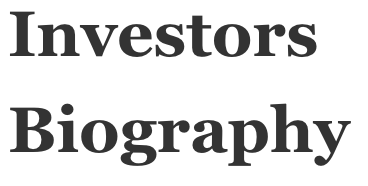Reid Hoffman created one of the world’s first social networks, then leveraged that experience to launch the professional-networking site LinkedIn. Despite lacking a traditional business education, he has become an influential Silicon Valley figure, having had his hand in some of the biggest tech companies in history, including PayPal and Facebook.
Early Life and Education
Reid Hoffman was born on August 5, 1967, in Palo Alto, California. The son of attorneys and liberal activists, he grew up in Berkeley, where as a boy he enjoyed playing complex board games like Dungeons & Dragons. Hoffman says the strategic thinking required for this game later proved useful in his business career.
Before high school, Hoffman convinced his parents to let him move across the country to attend the Putney School in Vermont. This progressive boarding school stressed a comprehensive education, and he took classes in everything from art to farming. He says the well-rounded problem-solving skills he developed at the school also proved useful in his later entrepreneurial pursuits.
After high school, Hoffman returned to his native Bay Area to attend Stanford University. His desire to pursue wide-ranging studies led him to the university’s symbolic systems program, where he took coursework in everything from applied philosophy to computer science. It was at the school that he also met future PayPal cofounder Peter Thiel. Despite sharing quite different political beliefs and ideologies, the two became friends.
Following his graduation from Stanford with a bachelor’s in symbolic systems, Hoffman moved to England to attend Oxford University. Studying on a Marshall Scholarship, he completed a master’s in philosophy in 1993.
Early Career and Joining PayPal
Inspired by the ways young entrepreneurs were trying to make a positive difference in the world, Hoffman abandoned his plans to become a writer and professor and instead entered the tech sector. He first worked with Apple, then Fujitsu. At the former, he was part of a team that developed eWorld, a social network that never launched.
In 1997, now out on his own after leaving Fujitsu, Hoffman drew on his experience at Apple to create SocialNet. One of the world’s first social networks, SocialNet was designed to facilitate all manner of relationships, from the romantic to the professional. Hoffman lacked the managerial skills necessary to lead the project, however, and the ahead-of-its-time social network shut down in 1999.
While he was busy running SocialNet, Hoffman was approached by his friend Peter to become a founding board member of PayPal. At the time, the start-up was focused on becoming the go-to service for online person-to-person payments. Hoffman was influential in shifting its focus to the processing of customer-to-merchant payments.
He went on to serve as PayPal’s executive vice president and chief operating officer. In 2002, eBay purchased the payment-processing site for $1.5 billion. The deal gave Hoffman the time and financial resources to pursue a new venture.
Launching LinkedIn
That venture was LinkedIn, the professional networking site for which he would become best known. Hoffman launched LinkedIn in his living room in December 2002, and the site went live the following May.
With Hoffman serving as chief executive officer, LinkedIn attracted 4,500 members in its first month alone. Applying the lessons he learned from his experience at SocialNet, Hoffman quickly grew LinkedIn into the world’s leading professional networking site.
In 2004, as LinkedIn was rapidly expanding, Hoffman was approached by 20-year-old Mark Zuckerberg, who pitched to Hoffman about providing an initial investment in the nascent social network Facebook.
Hoffman did invest but, citing his conflict of interest with LinkedIn, declined to lead the funding, instead referring Zuckerberg to Thiel, who invested $500 million. Hoffman lost out on massive financial returns by not investing more heavily, but he continued to serve as an advisor to the Facebook CEO.
Back at LinkedIn, Hoffman led as CEO of the site until 2007, when he decided to step down from his day-to-day responsibilities. He remained as chairman of the board, however. In that capacity, he turned the CEO duties over to Dan Nye and later to Jeff Weiner, who was at the helm when LinkedIn went public in 2011. At the time, Hoffman held a stake in the company that was valued at $2.34 billion.
LinkedIn grew over the next several years, and Hoffman’s personal wealth ballooned to $4.5 billion in the process. In 2016, LinkedIn boasted more than 400 million members.
Despite the growth, Hoffman and Weiner decided that the site would have the best chance of continuing to succeed as part of a larger company. In 2016, Microsoft purchased LinkedIn for $26.2 billion. Hoffman stepped down as LinkedIn’s chairman but accepted a seat on Microsoft’s board, a position he still holds today.
Media and Philanthropy
Thanks to his success, Hoffman has become a sought-after expert on investing and entrepreneurialism. He has written three books on the topics, two of which have appeared on the New York Times Best Seller list. He also hosts the popular podcast Masters of Scale.
Outside of the business world, Hoffman is a philanthropist who sits on the boards of several nonprofits. He is a signatory, along with his wife, Michelle Yee, of the Giving Pledge and has received a variety of awards recognizing his philanthropy. According to Forbes, he has given $1.5 billion to charity.

